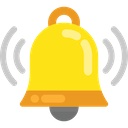CJD
Yoda
Offline

The finished ailerons.

The finished stabilizer

The finished elevators
The timeline is to finish the wings and fuselage covering by the end of the year, and start the engine rebuild in January.
I can't remember if I posted or not about the cause of the crash in 2019?!? When I bought the wreck the story was that the engine failed and the plane stalled and crashed. I pulled up the NTSB final report, and it turns out the engine was brand new, with only 1.6 hours on it since rebuild. It was "screaming" all the way through the crash. The pilot was entirely at fault. He took off and started a turn too soon. When he realized that he was not going to clear the trees along the airfield, he yanked the stick and stalled the plane into the trees.
So...the engine should not need all new parts, since it only had 1.6 hours of time on it. This could save as much as $30k...woo hoo! After any prop strike the FAA requires the engine to come apart for inspection, but a set of gaskets could very well be all it needs. Wouldn't that be a nice break!!

 Hi Guest!
Hi Guest!

 smilie in place of the real @
smilie in place of the real @
 Pretty Please - add it to our Events forum(s) and add to the calendar! >>
Pretty Please - add it to our Events forum(s) and add to the calendar! >> 





